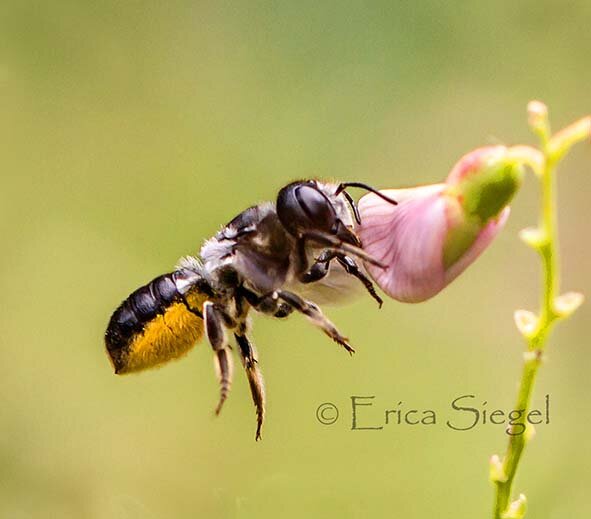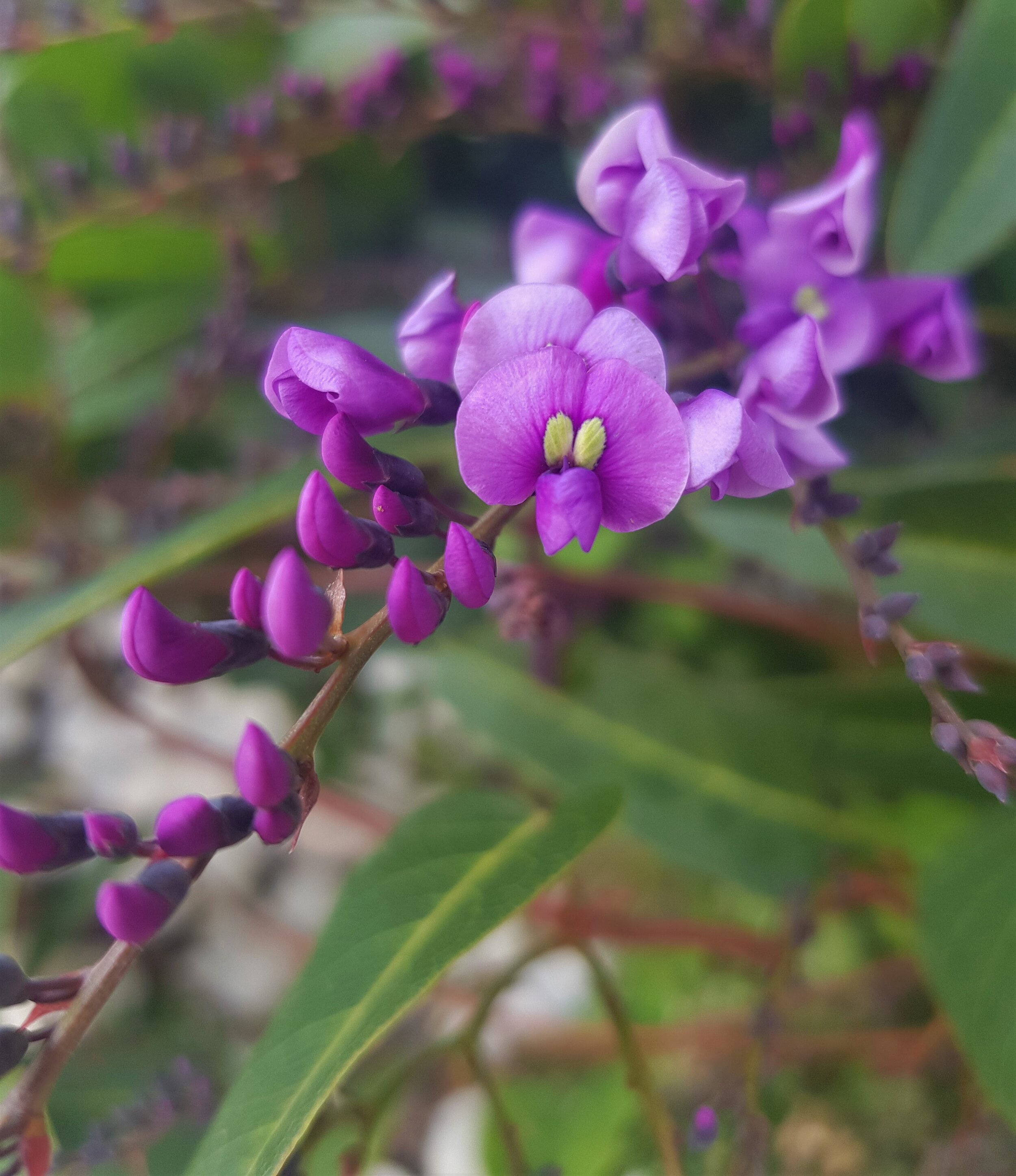Bee puns really sting..
Australian native bees come in a whole spectrum of colours and sizes.
Unlike the iconic (and introduced) European honeybee that most of us are familiar with, our native bees are mostly solitary and in some cases stingless!
While in Tasmania we have over 100 species of native bees, some common ones are Reed bees, Leafcutter bees, and Resin bees.
Reed bees are small and slender with shiny black bodies and are just under 8mm long. They often nest in dry twigs and fronds of plants.
Photo by Erica Seigel Wildlife Photography
Leafcutter bees are extraordinary! They cut small circles out of soft leaves and use it as nest building material – their favourite leaves to use are often the leaves of rose plants.
Photo by Erica Seigel Wildlife Photography
Resin bees come in many colours and sizes. There are some as big as 14mm long while there are others that are as small as 8mm. They nest in pre-existing holes in timber and stonework.
They get their name from collecting resin from eucalyptus trees, which they use to build dividing walls in their brood cells.
Photo by Erica Siegel Wildlife Photography
Native bees are expert pollinators with their messy feeding style. Once they visit a flower to collect pollen, they emerge covered in it! They can spread the pollen a lot further and with more ease, while honeybees have a neater method of carrying the pollen on their hind legs. This method is not as effective for our native flora and this is why native bees are integral to the survival of many Australian native plants.
Another iconic (and again, introduced) bee is the bumble bee! They were first discovered in Tasmania around 20 years ago. It is unknown how they were introduced but they very quickly established a population on our island state. Genetic testing of the bumble bees found in Tasmania shows that their population stemmed from two or more queen bees, suggesting that someone has imported them illegally for one reason or another.
There hasn’t been enough research done to pinpoint what effects bumble bees have on our native bee population but it is clear that they compete with our native bees and animals for territory and food.
One species in particular is a cause for concern – The endangered swift parrot. Bumble bees occupy hollows in trees and eat the nectar from flowering eucalyptus trees – two vital things for the survival and reproductive success of the swift parrot.
The bumble bee is also not an efficient pollinator, they often bite through a flower to get the nectar and bypass the pollen altogether.
What are some things I can do to encourage native bees into my garden?
Everyone knows that bees need flowers!
Aim for a mix of native plants so that you have something blooming all year round.
Research has shown that native bees are more drawn to flowers that are blue, white and yellow, rather than the brighter colours such as red.
Here are a few suggestions for your garden!
Everlasting Daisies
Everlasting daisies are shallow flowers, making it easy for native bees to access their pollen.
These flowers are beautiful and absurdly easy to grow!
Grevilleas
Another hardy Australian native plant is the Grevillea.
Loved by native birds and bees - you’ll have a wildlife haven in your backyard!
Wattle
Wattle is a classic sign of spring in Tassie with it’s vibrant yellow flowers!
Bees absolutely love it because even with heavy rainfall it still produces plenty of pollen.
Purple Coral Pea
Purple Coral Pea or Hardenbergia violacea is a stunning ever-green climbing plant.
It grows well in coastal areas and can withstand colder climates.
Some species of native bees aren’t picky when it comes to where they get their pollen!
Here are a few suggestions for non-native plants that can be grown in the garden:
- Lavender
- Camellias
- Delilahs
- Many vegetables and herbs when left to flower, such as cabbage, lettuce, broccoli, and mustard!
Home sweet home
It’s easy to create a home and safe place for native bees in your backyard!
https://www.aussiebee.com.au/bee-hotel-building-tips.html
Aussie Bee shows you how to create an environmentally friendly bee hotel in your backyard and how to tailor it to the type of native bee you want to attract!
Happy gardening and remember, bee puns are good for your health! They give you a dose of vitamin bee!
Sources
https://www.sgaonline.org.au/bees-good-bad/
https://www.utas.edu.au/news/2017/6/22/328-native-bees-best/
https://www.aussiebee.com.au/beesinyourarea.html
https://www.abc.net.au/news/science/2019-01-29/merits-of-native-bees-can-they-save-us/10749696








